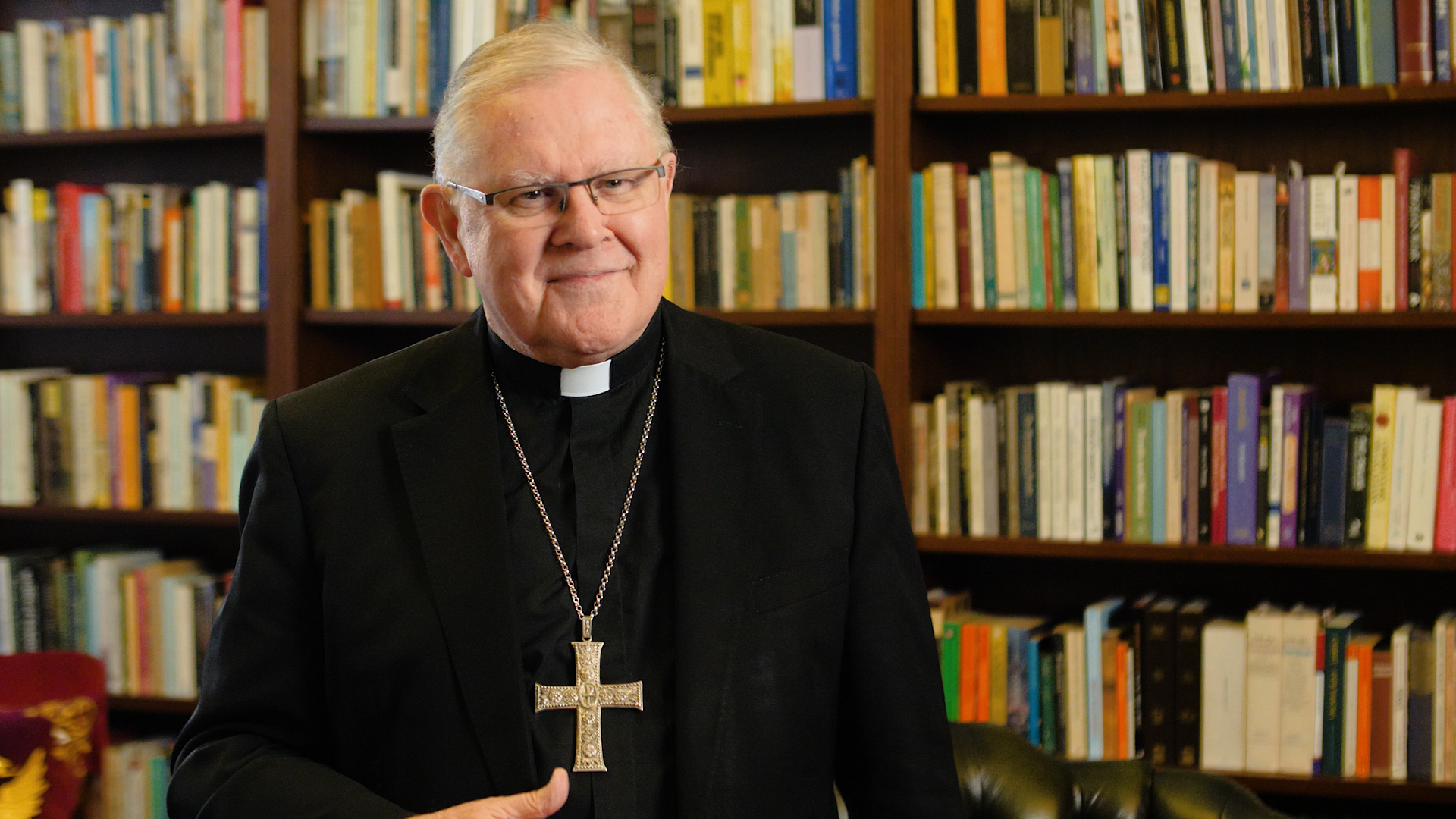Well, the sun has returned after the drenching horrors of yesterday. It rained non-stop for 24 hours, at times heavily – and that’s not what you expect in Rome at this time of year. This city doesn’t handle rain well. The water doesn’t drain off properly, with puddles and rivulets everywhere; the roads and pavements (especially the cobbles) become seriously slippery. At times I felt I was ice-skating on some of the travertine pavements. It’s made worse when you’re all dressed up in bishop-clobber (soutane, sash, beanie) which isn’t exactly designed for wet weather. Then you have to contend with one of those toy umbrellas that does little to keep you dry and keeps blowing inside out. Thus came to an end the first week of the Synod.
We’re actually moving through the agenda more quickly than was programmed, chiefly because the Secretary General, Cardinal Baldisseri, keeps cracking the whip. There was a cry of jubilation on Saturday afternoon when he said we could have a 10-minute break before we moved from the three-minute speeches into the so-called free discussion. But he told us that there would be no coffee. Boos ensued. One bishop suggested (sotto voce) that if we couldn’t have a coffee someone should open the grog-cupboard. That would have made the free discussion really interesting.
Now that we’ve “done with” the first part of the Instrumentum Laboris, we’ve moved on to the second part which focuses on the vocation of the family. Many more bishops want to speak on the second and third parts, as the Secretary General has reminded us a number of times. As a result, they’re becoming stricter on the three-minute limit. We’ve had a couple of speakers stopped in their tracks before they’d uttered all their profundities. These days they don’t just turn off the microphone as they used to; the President gently intervenes as the speaker takes a breath and thanks him profusely. Killing me softly.
At the start of each session, we have to register our presence in the Hall electronically, so you can see who’s there and who’s not. The numbers were down on Saturday afternoon, which raised a few eyebrows. I’m seated just behind the ecumenical delegates who were notable by their absence. Someone thought it was because of the sabbath, but none of them is Jewish. I think they just got the stitch. Bishops were absent too, but we were told that some were off trawling through the proposed amendments to Part I of the working document. That didn’t account for all the absentees. Episcopal exhaustion, Synod sickness?
During the free discussion, I decided to speak. I tried to say that during the Synod discussions and those preceding there was a sense at times that it’s a matter of all or nothing – that we have two options: either to abandon the Church’s teaching on marriage and the family or to leave things exactly as they are, saying and doing what we’ve said and done for a long time. I suggested that neither of these was a real option. We weren’t going to abandon Church teaching; but it was unthinkable that we would simply say and do what we’ve always said and done. Why bother with the time, energy and expense of two Synods and all that’s gone with them if nothing whatsoever is going to change? The impression at times is that there’s really no space between the two extremes, when in fact there’s a huge space – space for all kinds of pastoral creativity. We need, I said, to expand our vision of possibility, think laterally, outside the square. That’s the task of this Synod and the real challenge to our corporate apostolic imagination: neither to abandon Church teaching or to leave things untouched, but to explore the vast territory that lies between iconoclasm and immobilism – and to do so in a way that’s practical at the point of both language and action. We have to speak differently and act differently, but staying within the wide parameters of Church teaching which has its roots in Jesus. At the end of the first week, I have a stronger sense of that that’s possible than I did earlier in the week. But it’s still early days and a lot will emerge in the next two weeks. Who knows what the fermentation will produce?
To celebrate the end of Week I, I went to dinner last night at the apartment of that splendid host, Archbishop Arthur Roche, former Bishop of Leeds and now Secretary of the Congregation for Divine Worship. I wasn’t too sure who else would be there, but it turned out to be a sparkling company. At the table were Cardinal Vincent Nichols of Westminster, Cardinal Gerard Lacroix of Quebec, Cardinal John Dew of Wellington, Archbishop Paul Gallagher (former Nuncio in Australia and now the Holy See’s Foreign Minister), Bishop Peter Doyle of Northampton, plus Archbishop Roche, Archbishop Gus Di Noia and myself. It turned out to be a rollicking conversation and a delightful evening – just what the doctor ordered after the rigours of the first week. The Synod might be hard work, but Rome can always provide a touch of “la dolce vita” which is rich reward for all the rigours. Now on Sunday we have our first free day … and the sun is shining. So out into the city I go, beyond the ecclesiastical village.
